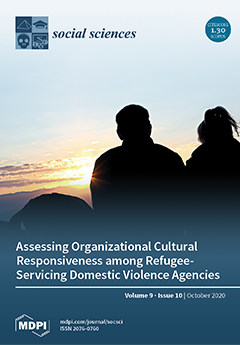Open AccessArticle
African American Experiences in the Historic Dunbar Neighborhood in San Marcos, Texas: A Case Study of Counter-Life Stories
by
Shetay Ashford-Hanserd, Eric Sarmiento, Colleen C. Myles, Steven W. Rayburn, Aimee Kendall Roundtree, Mary-Patricia Hayton, Edward Ybarra, Sarai Benitez, Theresa M. Clifford, Christopher Pierce, Chad D. Williams and Shadi Maleki
Viewed by 5345
Abstract
The purpose of this participatory research project is to examine the lived experiences (counter-life stories) of current and former Dunbar residents and congregants of Dunbar churches to demonstrate how local stories counter the dominant perspective about the experiences of American Americans in the
[...] Read more.
The purpose of this participatory research project is to examine the lived experiences (counter-life stories) of current and former Dunbar residents and congregants of Dunbar churches to demonstrate how local stories counter the dominant perspective about the experiences of American Americans in the Dunbar community. Once a thriving community at the center of civil rights activities in Hays County, Texas, the neighborhood has evolved in many ways in the past several decades, contrary to popular belief. This case study employs counter-life story methodology to uncover the hidden truths about Dunbar residents and congregants’ experiences to generate new knowledge about the experiences of African Americans in San Marcos, Texas, and Hays County. Thematic analysis of unfiltered commentary from Dunbar community members revealed three emergent themes: history of racism and slavery, impact of environmental and social racism, and rebuilding and restoring the community. Individual and shared strengths make the community unique and resilient. In-migration of new community members has been outpaced by outmigration. Finally, issues of taxation, representation, and the ongoing deterioration of neighborhood infrastructure are forefront in community members’ minds. In sum, the bedrock of personal and community values and hard work has not changed, but external forces continue to affect the community and compel it to pivot and make plans for change. Personal and communal strengths make the community unique and resilient. Future work will enlist geographic data and methods to help further investigate changes over time.
Full article
►▼
Show Figures





